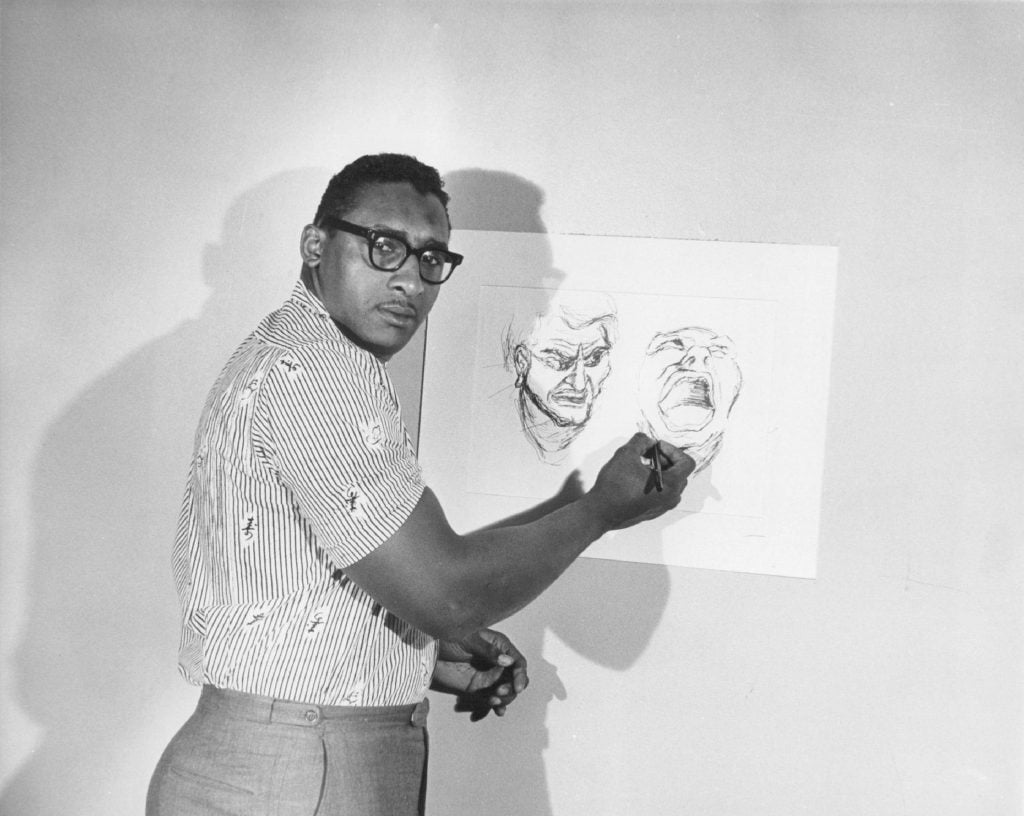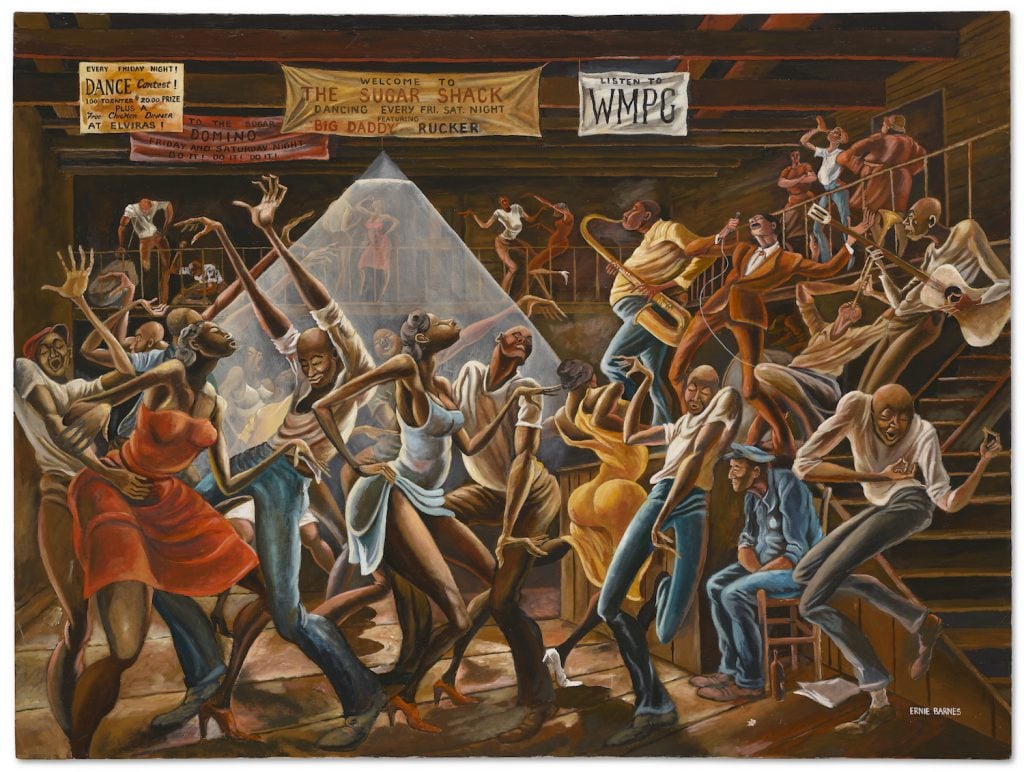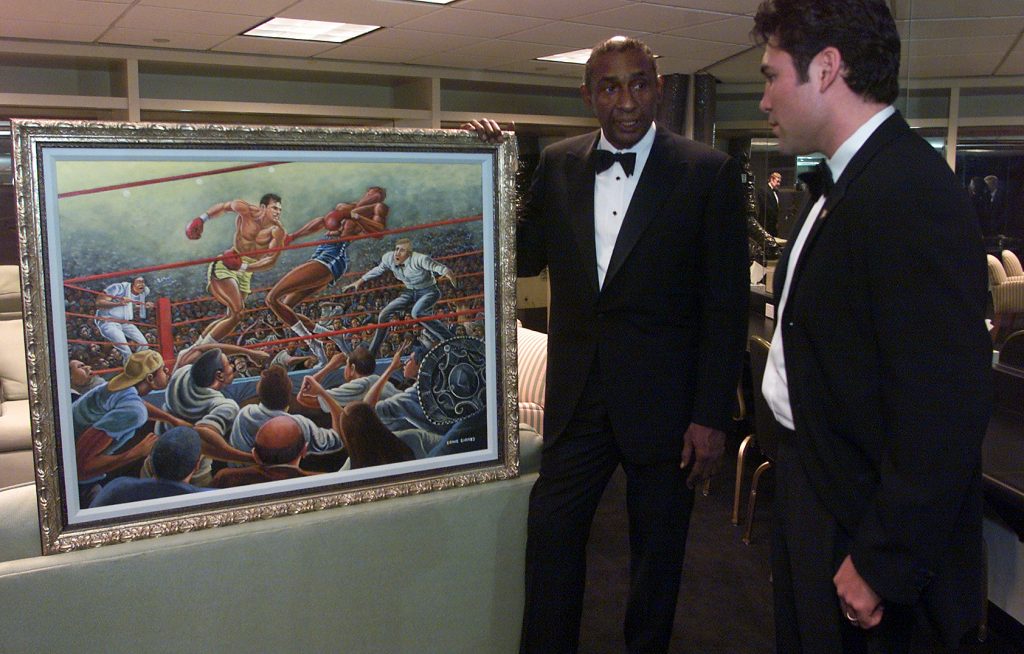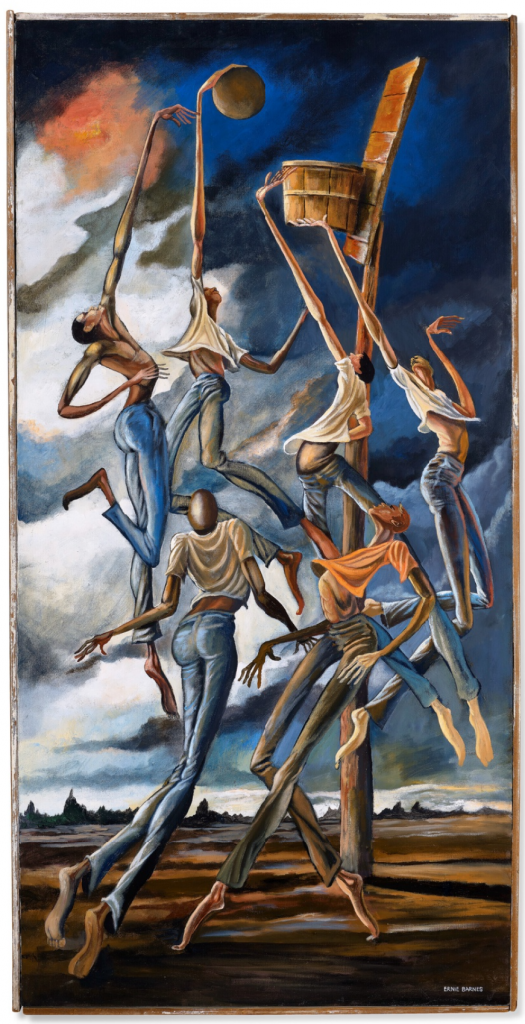The Art Detective
The Surprising New Record for Ernie Barnes Didn’t Come From Left Field. We Deconstruct the Playbook for Selling ‘The Sugar Shack’
How the players pulled off a jaw-dropping sale that is already reshaping the artist's market.

How the players pulled off a jaw-dropping sale that is already reshaping the artist's market.

Katya Kazakina

Seller’s remorse is real. Just ask Los Angeles art collector Jim Epstein.
A longtime supporter of artist Ernie Barnes (1938–2009), Epstein was as surprised as anyone to read last week that his iconic painting, The Sugar Shack (1976), fetched $15.3 million at Christie’s New York.
The criminal defense attorney owned the work for more than four decades, buying it directly from the artist. He sold it just six months ago for “a lot less than what it sold for at Christie’s,” Epstein told me this week, declining to specify the amount. “Do I have regrets that I sold it? Of course!”
In an auction season that has already tallied $2.6 billion, with major works by Andy Warhol and Jean-Michel Basquiat, The Sugar Shack was the one to steal the show, as two stubborn bidders pushed the price from $100,000 into the stratosphere. The winner, the Houston-based entrepreneur Bill Perkins, compared the painting to the Mona Lisa in an interview with my colleague Eileen Kinsella.

Ernie Barnes, The Sugar Shack (1976). Courtesy of Christie’s New York.
The painting depicts Black men and women grooving to a live band in a two-tiered dance hall, their elongated figures matching the elated mood. It appeared on the cover of Marvin Gaye’s 1976 album I Want You and in the 1970s television show Good Times.
The story of how The Sugar Shack ended up at auction says a lot about inner workings of the red-hot art market and illustrates what it takes to boost an artist from moderate lifetime success into the millionaires’ club at auction—and who gets shut out of the deal.
***
Barnes, while respected in his lifetime for parlaying a professional football career into full-time art-making, often focused on sports themes, was not an obvious choice for the auction houses’ spring flagship sales. Barnes made his evening sale debut at Christie’s 20th-century art sale on May 12, and The Sugar Shack stood out among the blue-chip offerings.
A few lots earlier, a 1909 Cubist sculpture by Pablo Picasso sold by the Metropolitan Museum of Art fetched $48.8 million. One lot later, Emanuel Leutze’s historic painting, Washington Crossing the Delaware, soared to $45 million.
Estimated at $150,000 to $200,000, the Barnes was by far the most modest lot. Curiously, though, Christie’s had guaranteed the painting, a sign that the house was extremely keen on getting it—and confident it would sell.
***
As it turns out, the painting was part of a larger, higher-value consignment, according to a person familiar with the deal, who asked not to be named because the information is private. A representative for Christie’s declined to comment. But the Art Detective can reveal exclusively that the person who shepherded the entire consignment to Christie’s was Ales Ortuzar, the owner of Ortuzar Projects, a New York gallery known for revamping the careers of overlooked artists.
Last year, Ortuzar co-organized the first Barnes exhibition in New York since the 1990s with Andrew Kreps Gallery and the Barnes estate. The Sugar Shack was on view among paintings of athletes, loaned by Epstein, who in recent years had also obliged requests for the painting for Barnes shows at the California African American Art Museum and UTA Artists Space in Los Angeles.

Ernie Barnes, left, shows a painting commissioned by Jerry Buss to Oscar De La Hoya, right. Photo by George Wilhelm/Los Angeles Times via Getty Images.
Ortuzar later approached Epstein to sell the work, advised the new owner on the quick resale of the painting at auction this season, and represented the seller in the competitive consignment process between Christie’s and Sotheby’s. (Sotheby’s offered to include The Sugar Shack in its day sale, according to people familiar with the negotiations.)
“The estate is thrilled with the attention that Ernie’s work is receiving from the museums, critics, and the broader art world that overlooked him,” said trustee Luz Rodriguez, Barnes’s longtime assistant. “I trust Andrew Kreps Gallery and Ortuzar Projects, and together we guided The Sugar Shack to Christie’s.” When the lot hit the block, Rodriguez added, “The art spoke for itself.”
The estate, dealers, and Christie’s executed the market-making strategy to perfection.
“It’s a perfect example of when the auction mechanism really works,” said Liz Sterling, an advisor and specialist in American art. “It’s an iconic work by the artist. The choice to put it in an evening sale really elevated it and allowed it to reach a price above anything it could have achieved in the private market.”
***
The Sugar Shack wasn’t the only painting Ortuzar bought from Epstein or offered for auction. Epstein said he had seven paintings by Barnes, including a portrait of his dog, and sold all of them to the anonymous buyer through Ortuzar.
“I was contacted by his representative,” said Epstein. “They bought seven works from me, all painted by Ernie Barnes.”
The second Barnes painting at Christie’s last week, also from Epstein’s collection, was offered in a May 13 day sale, following the success of The Sugar Shack. Titled Storm Dance (1977), it depicted a group of Black men leaping into the air to drop a ball into a makeshift basketball hoop, with storm clouds gathering in the sky above. It sold for $2.3 million, not surprisingly way above the estimated range of $100,000 to $150,000.

Ernie Barnes, Storm Dance (1977). Courtesy of Christie’s New York.
Meanwhile, other collectors who have owned works by Barnes for decades are coming out of the woodwork, eager to cash in, according to Kreps.
This week, Ortuzar Projects and Andrew Kreps Gallery announced co-representation of the Estate of Ernie Barnes, which is thought to hold hundreds of paintings. Prices are being rapidly revised to reflect the new reality. An acrylic on paper, Study for the Assist (1987), is on view this week in Kreps’s booth at Frieze New York. Priced at $75,000, it sold to a museum trustee on the West Coast. A couple of weeks ago, it would have cost half that amount, said Kreps.
***
From what we hear, The Sugar Shack was a win—and a windfall—for all the players involved (though perhaps not for Epstein, who may have sold too early). On a risk-versus-reward basis, it was one of the most lucrative deals of the season for Christie’s, which sold $1.4 billion worth of art in one week.
As the guarantor, Christie’s gets part of the upside, or the difference between the low estimate ($150,000) and the hammer price ($13 million). The difference in this case, of $12.85 million, was staggering. While deals vary, 80/20 splits are common, which means that the consignor gets 80 percent of the upside and the guarantor gets the rest. So it’s safe to assume that, as guarantor, Christie’s could pocket $2.6 million or more. In addition, the house also gets the buyer’s premium, which in this case was $2.2 million. This means that Christie’s made $4.8 million on a work by an artist who had never been included in its evening sale before. Not a bad payday!

Ernie Barnes, No Time For Church (1972). Courtesy of Andrew Kreps Gallery, New York and Ortuzar Projects, New York.
And there’s more Barnes works to come to feed the artist’s existing fan base and new, hungry investors. Two paintings are heading to the auction block on May 26, one at Bonhams in New York, another at Christie’s in Hong Kong.
“There’s a lot of work that people just haven’t seen, things that have been buried away, really exciting works that will give people a sense of what an extraordinary artist Ernie Barnes is,” said Kreps. “The art world is big enough to include different voices. He’s a really, really important voice.”